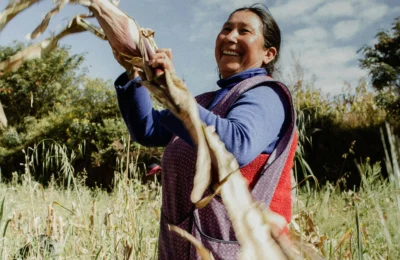Lord of Qoyllurit’i 2025 | Complete guide to the Sacred Andean Pilgrimage
The Lord of Qoyllurit’i is one of South America’s most incredible religious events, where Catholic faith and ancient Andean traditions come together in a breathtaking celebration. Every year, thousands of pilgrims hike up to 4,800 meters (15,750 ft) near the snowy Ausangate Mountain to honor a sacred image of Christ that miraculously appeared on a rock in the 1700s.
Recognized by UNESCO as Intangible Cultural Heritage (2011), the 2025 festival will run from June 15–18—offering a powerful spiritual experience and a deep dive into Andean culture. If you’re planning to go, this guide with Kantu Perú Tours will cover everything: history, meaning, dates, what to expect, maps, and essential tips!
Origin of the Pilgrimage to the Lord of Qoyllurit’i
The pilgrimage to the Lord of Qoyllurit’i stems from a colonial-era legend (18th century) in which an indigenous shepherd boy, Marianito, encounters a mestizo child (Christ) on the Ausangate snowcap. After the divine child disappears, his image remains imprinted on a rock, and Marianito dies, replaced by a snow flower (qoyllur). This festival, blending Catholic faith and Andean worship of the Apus (mountain spirits), was declared UNESCO Intangible Cultural Heritage in 2011. Today, thousands make the pilgrimage to 4,700 meters above sea level, performing dances, offerings, and syncretic rituals.
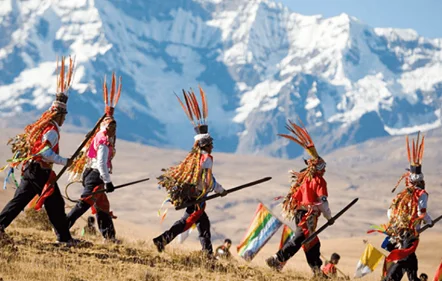
Paquris peregrinos al Señor de Qoyllurit’i
Location of the Lord of Qoyllurit’i pilgrimage
The main celebration of the Lord of Qoyllurit’i will take place from June 15 to 18, 2025, according to Cusco’s festive calendar. It unfolds at the foothills of the Ausangate mountain, in the district of Ocongate (Cusco Region). The starting point for pilgrims is Mahuayani, from where an 8 km trek (4–6 hours) begins toward the Sinakara Sanctuary at 4,800 meters. The main event occurs on June 18, featuring the central Mass and the most important rituals, including the ascent of Ausangate by the cenadores (dancers) and Ukumaris (bear-like male guardians) from different participating nations.
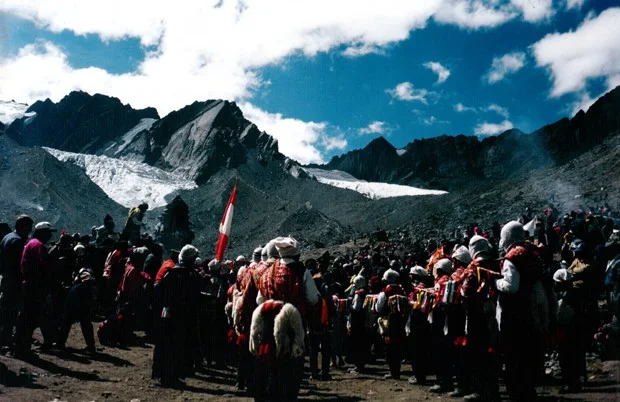
Dancers at the Lord of Qoyllurit’i in Cusco
Significance of the Lord of Qoyllurit’i pilgrimage
This festival dedicated to the Lord of Qoyllurit’i represents the most important religious syncretism in the Andes:
- For Catholic tradition: The pilgrimage venerates the miraculous Christ.
- For Andean cosmology: It honors the Apu Ausangate (sacred mountain).
- The Ukukus (bear-men) act as spiritual mediators.
- Offerings are made to Pachamama (Mother Earth).
- It includes ancestral purification rituals, making it ideal for mystical tourism in Cusco.
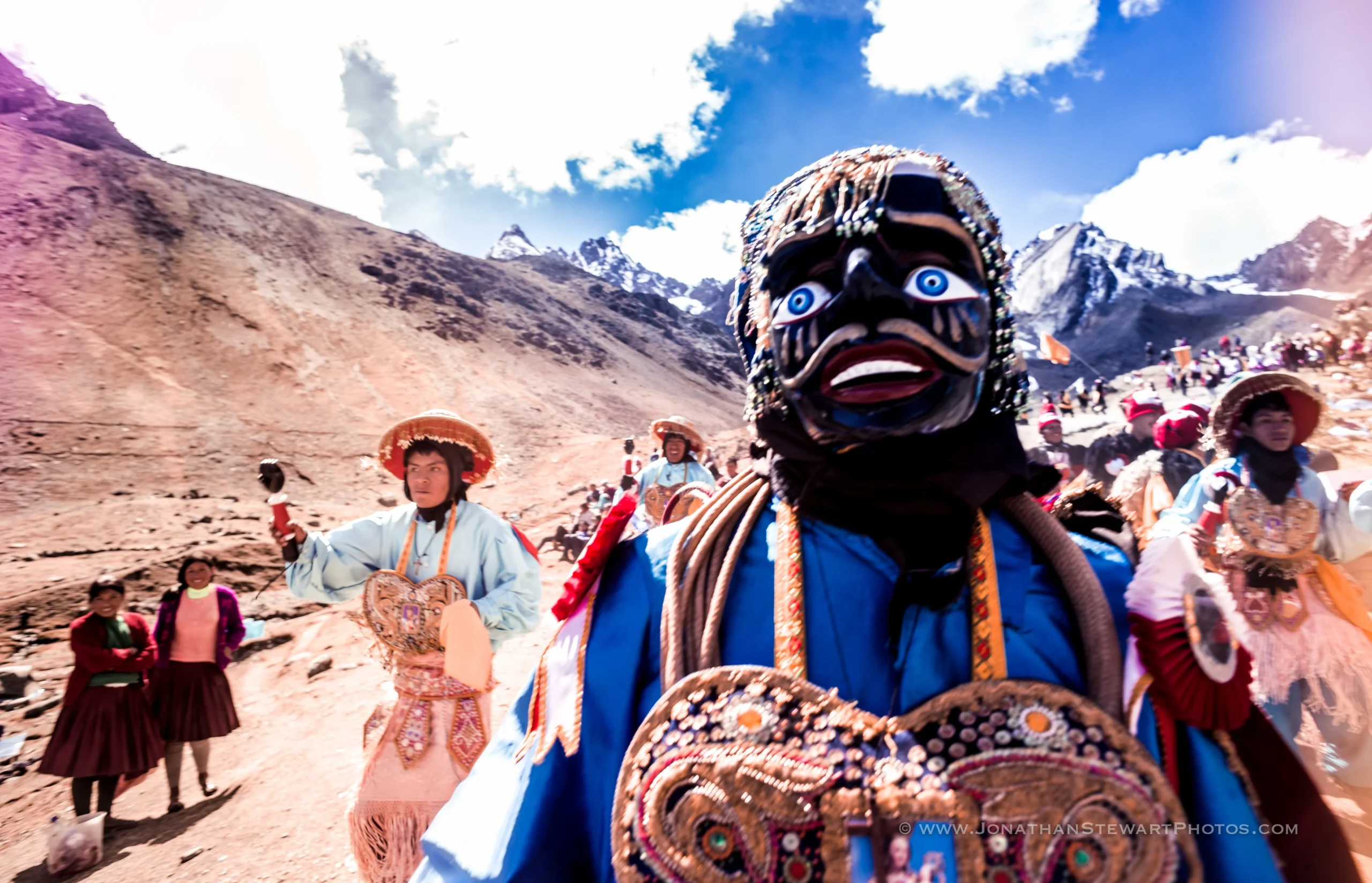
Danzantes en la festividad del Señor de Qoylluriti
Main activities at the Lord of Qoyllurit’i festival
Visitors who join the pilgrimage to the Lord of Qoyllurit’i will witness:
- Massive processions with traditional dances
- Colorful parades of performers in vibrant costumes
- Andean music played on quenas (flutes) and drums
- Bilingual Mass (in Quechua and Spanish)
- Nighttime candle ritual at the sanctuary
- Alacita ceremony (symbolic barter tradition)
- The Ukukus climbing the glacier to retrieve sacred ice
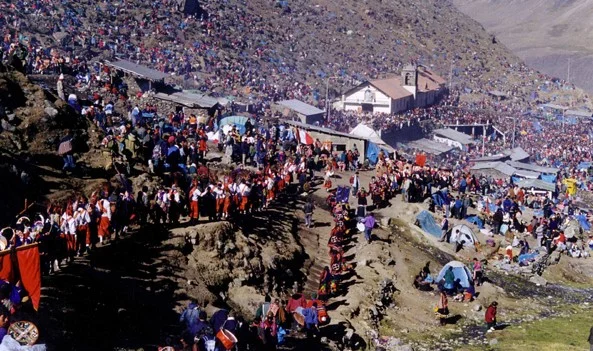
Peregrinacion al señor de Qoyllurit’i
Pilgrims and participating nations
The Lord of Qoyllurit’i brings together representatives from various Andean communities across Cusco region along with international visitors. Among them, only eight traditional nations participate with their official delegations, including dancers, pilgrims, ceremonial leaders (cenadores), dance organizers (carguyoc) and male guardians (ukumaris or pablitos) from each delegation:
- Paucartambo
- Quispicanchi
- Canchis
- Acomayo
- Paruro
- Cusco
- Calca
- Urubamba
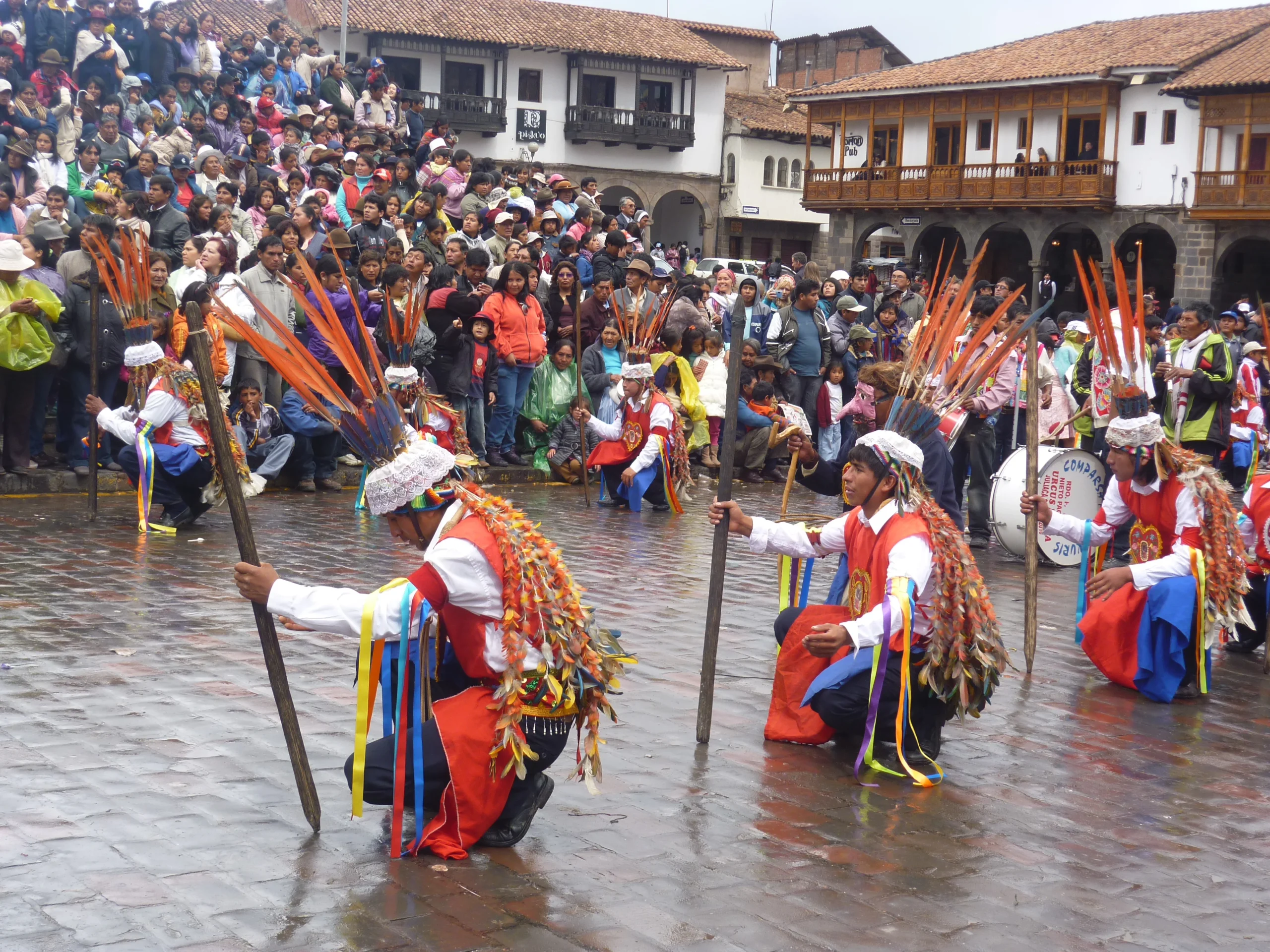
Nación Cusco en la festividad del señor de Qoylluriti
Traditional dances at the Lord of Qoyllurit’i Festival
The pilgrimage features various traditional dances that represent devotion, cultural syncretism, and resistance. The most notable include:
- Wayllascha: A joyful dance performed by unmarried women in honor of Taytacha (the Lord of Qoyllurit’i).
- Ch’unchu: Represents Amazonian people and their spiritual connection with the Apus (sacred mountains).
- Qhapaq Qolla: Symbolizes the ancient Andean traders and their relationship with the land.
- Contradanza: A colonial-influenced dance blending Spanish movements with indigenous rhythms.
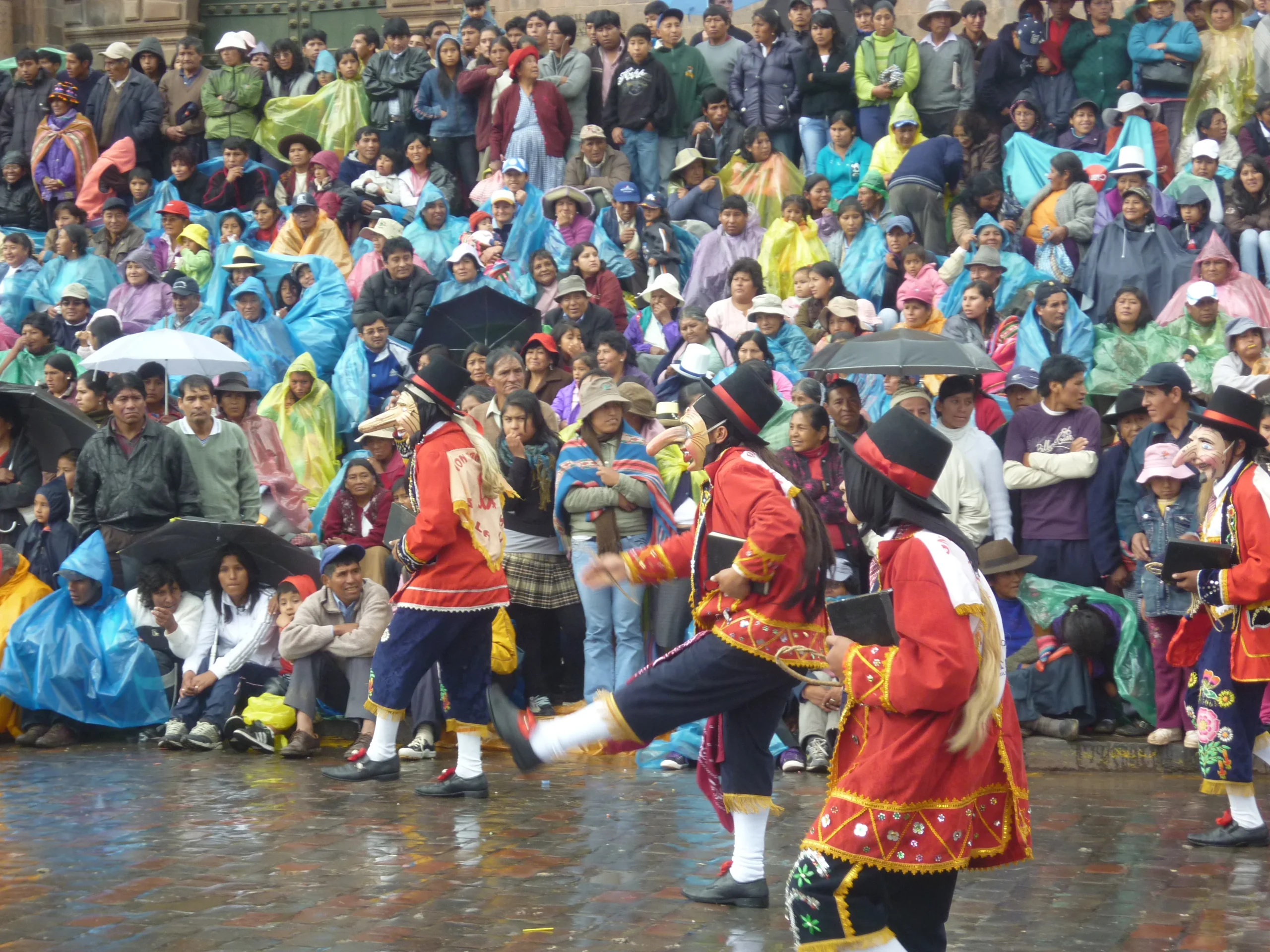
Danzantes en la festividad al señor de Qoylluriti
The Ukumaris or Ukukus (Ritual Guardians)
The Ukukus (bears) are central figures in the festival, representing mythical beings who protect cosmic order, performed exclusively by men from the participating nations.
- Spiritual role: They serve as intermediaries between the human world and the mountain deities (Apus).
- Attire: They wear bear masks, thick wool suits, and carry whips (to “purify” pilgrims).
- Endurance test: They climb the glacier on the coldest night to bring back blocks of ice, symbols of purification.

Ukumaris in the Lord of Qoylluriti festivitie
How to reach the Sanctuary of the Lord of Qoyllurit’i?
1. Route from Cusco: By land transport (4 hours):
→ Take collective buses from Cusco’s Terminal Terrestre to Ocongate (S/25)
→ From Ocongate to Mahuayani in local trucks (S/15)
2. Pilgrimage trek: From Mahuayani to the sanctuary (5-7 hours):
→ Distance: 8 km from Mahuayani (3,800 masl) to Sinakara (4,800 masl)
→ Difficulty: High (requires prior acclimatization), with these key points along the way: Cruz de Apacheta (4,200 masl), Laguna Sinakara (4,600 masl) to the Main Sanctuary (4,800 masl) – final destination.
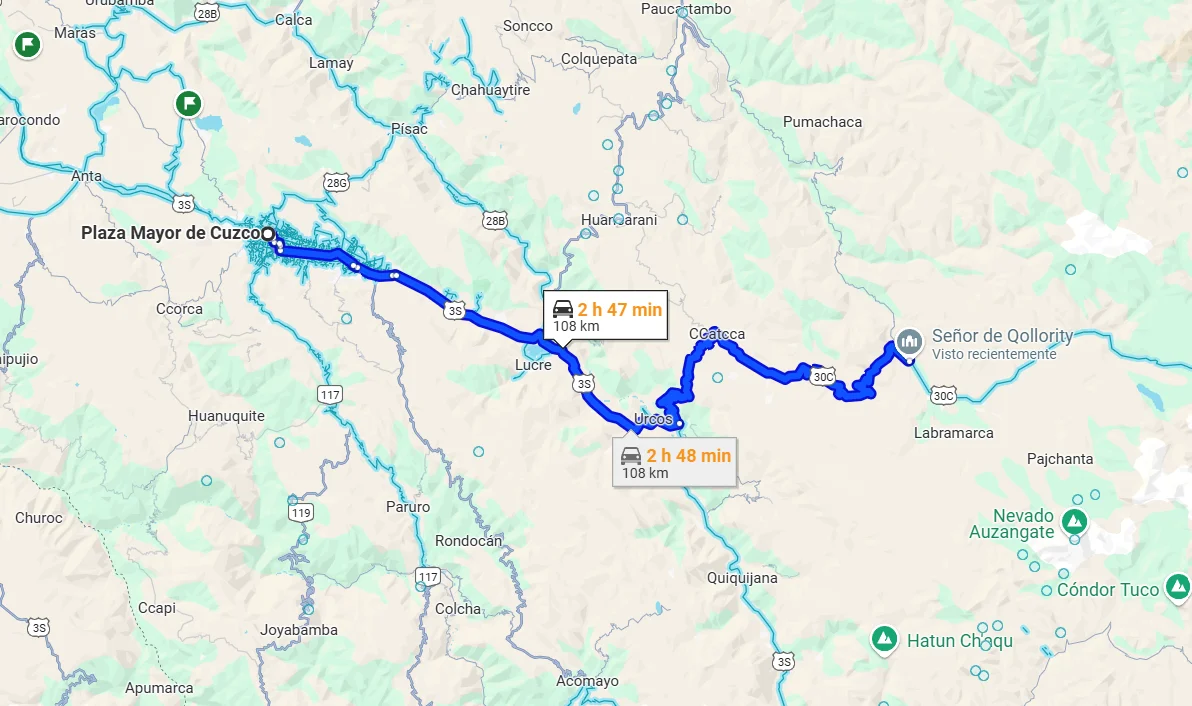
Mapa para llegar al Señor the Qoylluriti desde Cusco
Transportation for the Lord of Qoyllurit’i
- Depart Cusco no later than 5:00 am to avoid afternoon storms
- Check road conditions during rainy season
- Carry ID documents (police checkpoints along the route)
- Book return transportation in advance
- Rental horses available for final stretch (S/80-120)
- Local porters for equipment (S/50-80 per day)
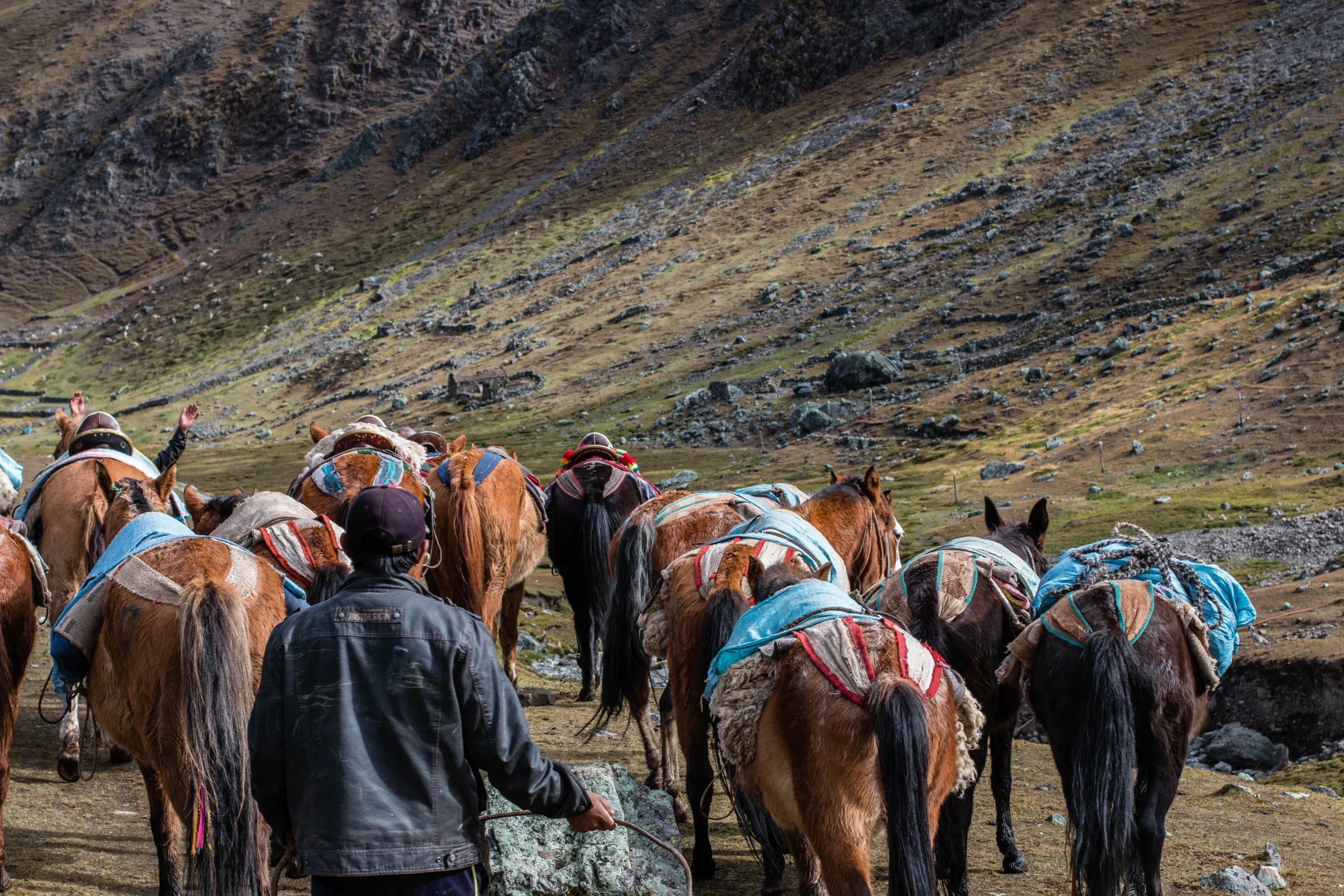
Caballos en la ruta de la peregrinación al Señor de Qoylluriti
Accommodation at the Lord of Qoyllurit’i
→ Organized Camps (Recommended): Each nation typically has community or personal tents in Sinakara. If you don’t bring your own tent, you can rent one (S/30-50 per night). Ask beforehand if blankets or thermal sleeping pads are included for protection against the cold.
→ Basic Lodging in Mahuayani: Though the village is small and remote, shared rooms (S/35-50 per person) with basic communal bathrooms are available. Note that the pilgrimage trek begins here, so you’ll need to return early if staying overnight.
→ Lodging in Ocongate: Before your ascent, consider basic hostels (S/40-60 per person) in Ocongate for better acclimatization and local community interaction.
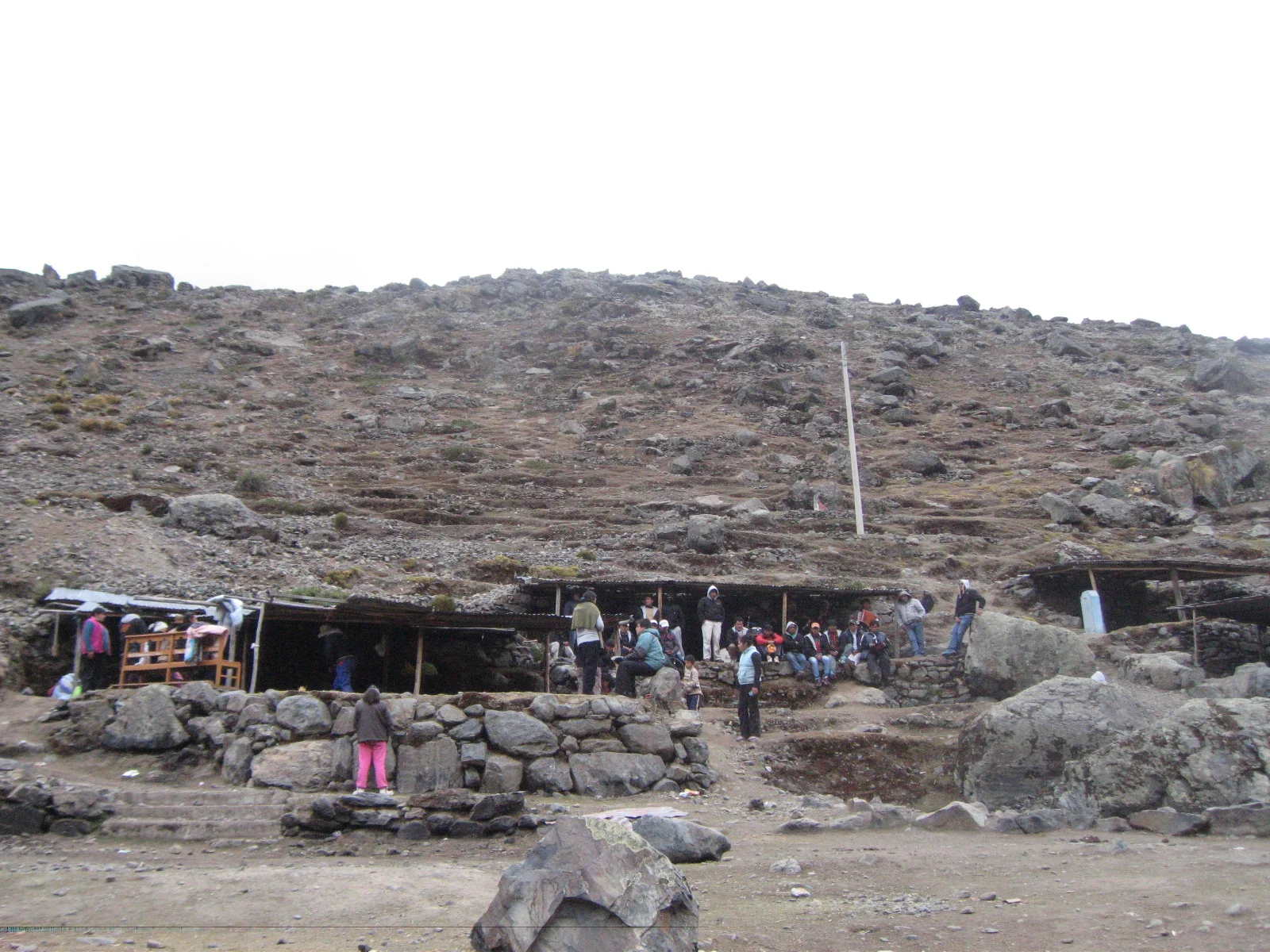
Caminata al santuario del Señor de Qoylluriti
Essential Recommendations
- Acclimatize 2-3 days in Cusco → Prevent altitude sickness before ascending above 4,700 masl.
- Hire local guides → They know the routes and traditions, ensuring a smoother experience.
- Thermal clothing & waterproof boots → Subzero temperatures and rocky terrain require proper gear.
- Bring cash → No ATMs or digital payment options available in the area.
- Respect sacred rituals → This is a spiritual pilgrimage; avoid intrusive photos or disruptions.
- Pack out all trash → The sanctuary is a sacred natural space that must be preserved.
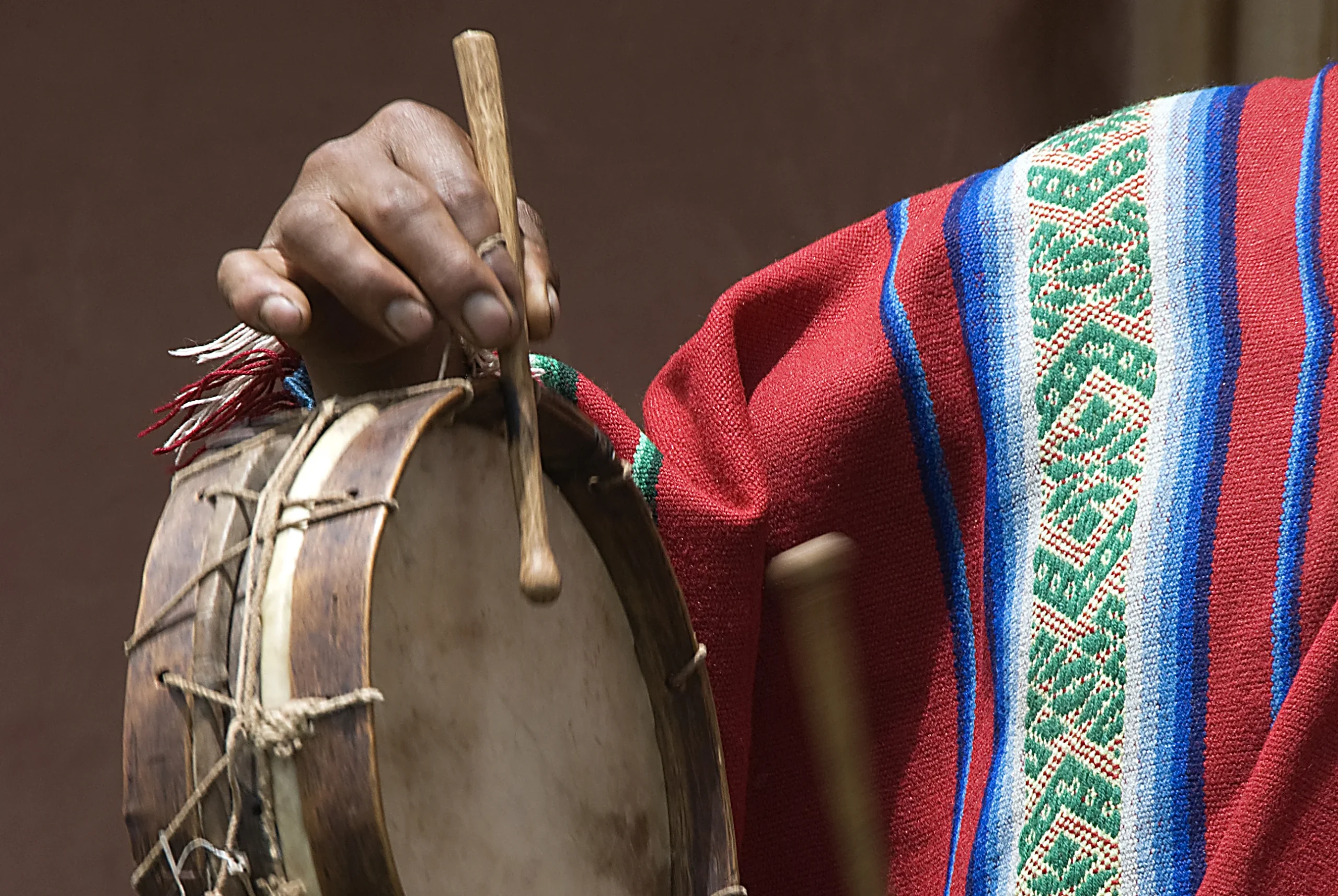
A men playing music in experiential tourism in Cusco
Tourism Impact of the Pilgrimage
The festival of the Lord of Qoyllurit’i attracts more national and international visitors each year, generating significant benefits for local communities. To maintain the authenticity of the celebration, it is essential to respect ceremonial protocols, support community tourism, hire local services, and immerse yourself in the spirituality of this place by following the guidance of traditional authorities.
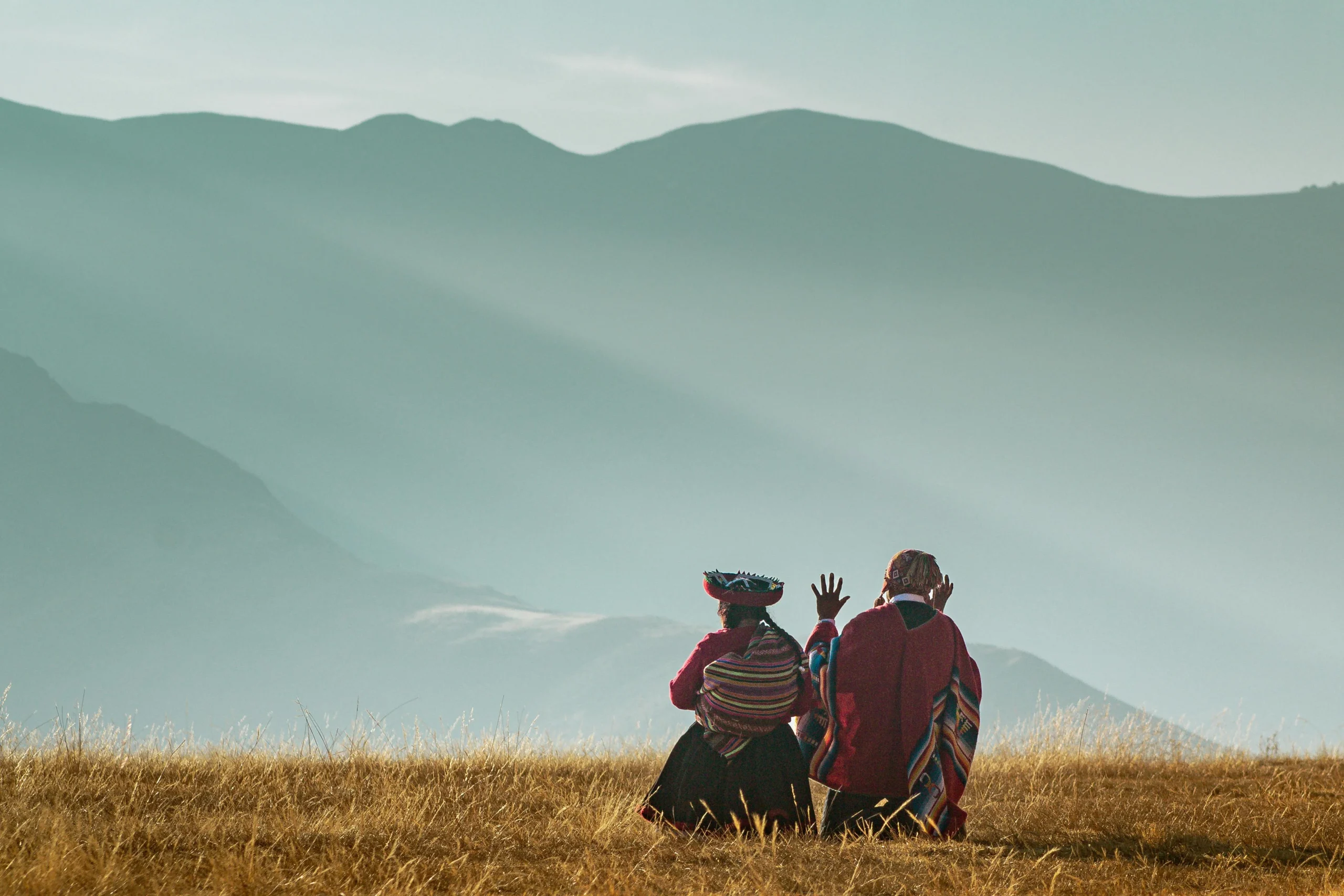
A native couple in the Sacred Valley on the Incas
Finally, The Lord of Qoyllurit’i offers a unique opportunity to connect with living Andean traditions. In 2025, visitors can witness this cultural event blending devotion, history, and nature in one of the Peruvian Andes’ most breathtaking settings.
For a complete and safe experience, Kantu Peru Tours offers comprehensive packages to visit Peru. We’re happy to assist with any questions or needs you may have!



